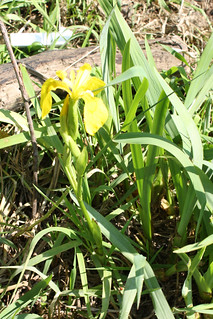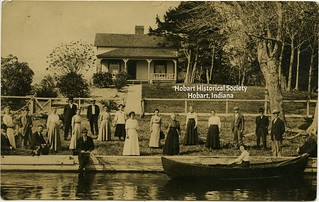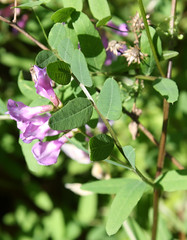On the afternoon of May 15, 1919, the phone rang in the house of William and Carrie Raschka, the house that had so recently seen a
happy family reunion. When William put the phone to his ear, he heard the voice of his brother, Frank — but not as he had ever heard Frank before — pouring out a scarcely coherent story … the new barn had caught fire, had burned, they couldn't save it, they couldn't save
them … the children …
The children were six-year-old Kenneth and four-year-old Esther. Not two weeks earlier they had romped around on Uncle William and Aunt Carrie's lawn. Now they were dead.
Frank and brother George, who co-owned the farm, had been out working in the fields when, around 2 o'clock, they saw smoke and flames coming from their barn, just recently built and filled with cow feed and hay.
Frank's wife, Frieda, busy with her housework, had noticed nothing amiss until she happened to look out the window and saw the men running in frantically from the field. In the next moment she saw the barn ablaze. I expect her heart sank when she thought back to the last time she had actually seen the children — 20 or 30 minutes ago — and then there was that litter of kittens one of the farm cats had had, out in the barn — the children were so fascinated by those tiny creatures — could they possibly have…?
The men tried to enter the barn, but the flames drove them back. The Raschkas called the Crown Point fire department, which responded quickly but still too late to save the barn itself. It was all they could do to keep the fire from spreading to other buildings. Meanwhile, I imagine, the parents and uncle searched around the house and yard and outbuildings, hoping against hope that the missing children were only hiding, frightened by all the uproar.
Eventually the firefighters doused the blaze. The men were able to enter the smoking wreck of the barn. And there they found the charred remains of the two children, near where the nest of kittens had been.
Their parents could do nothing but pick up the telephone and share the heartbreak with all the extended family.
Two days later, after a funeral in their home, Frank and Frieda laid the little ones to rest in the Salem Methodist Church cemetery.


Decades would pass before the family was reunited.


I don't believe Frank and Frieda ever had another biological child, although by 1930 they had adopted two little children, a boy and a girl.
Sources:
♦ 1930 Census.
♦ "Shocking Accident." Lake County Times 16 May 1919.
♦ "Two Children and Barn Burn." Hobart Gazette 23 May 1919.
♦ "Two Children Meet Death in Burning Barn Near Palmer." Hobart News 22 May 1919.






























![Ruth Briscoe, Est[her] Holmes, 27b](https://farm8.staticflickr.com/7099/6982586328_34f71368db_n.jpg)





















